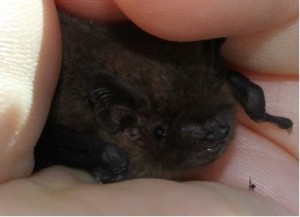 Golashane Farm is a privately owned reserve and not open for public visit without appointment.
Golashane Farm is a privately owned reserve and not open for public visit without appointment.
Situated in north county Meath near the Cavan border, the reserve is a privately owned farm managed entirely for wildlife. The landscape in this beautiful area of Ireland is characterised by rolling hills and hedgerows. The farm is currently brimming with native wildlife hosting a huge diversity of bird life and mammals from the familiar robin and wren to snipe and woodcock to the majestic kestrel and buzzard. Mammal life includes foxes and stoats and a variety of native bats.
The farm is being actively managed for wildlife, increasing food and shelter for native animals and planting new species of Irish flora. Actions carried out so far are the planting of new hedgerows and native woodland, the creation of wetlands and planting of giant bird tables in the form of fields of oats and kale dedicated to providing food for wild birds.
We will be monitoring the biodiversity of the reserve to learn how these land management changes benefit the local wildlife. Open days and educational workshops will be taking place on this new reserve in the near future so keep an eye on our events page for your chance to visit this idyllic wildlife haven.
Report from the Field (Oct 2012)
Ten ravens just flew over. I knew they were there while sitting at my computer because of that strange mix of cackling and honking that they make while they dive and twist after each other as they go by. Before that I was distracted by two buzzards. You know they’re about because of the soft mewing (it’s either them or a flying cat – imagine the consequences of that for songbirds and bats!).
Buzzards that visit Golashane Farm daily. On this particular day, two of them were present, hovering, gliding, mewing and ever watchful. Never seem to find anything to eat. But I guess they must, musn’t they?
The autumn is very changeable with a sunny day giving way to a heavy downpour and now quite cool temperatures. The bird fauna will soon change from the summer visitors such as the swallow to our winter guests ; redwings and fieldfares. There are some things to look forward to in the winter even when our beloved bats have opted for the solitude and peace of hibernation.
The crop we planted for birds has been a great success for butterflies and it will be of interest to see if the winter birds like it. It has added a peculiar aroma to the farm. It’s like my mother has taken to cooking cabbage every day and wafting the unpleasant odour all over north Meath!
This month I agreed to measure bats in one of the boxes for a Bat Conservation Ireland project on bat biometrics. I have realised that my ability to discern common pipistrelles from soprano pipistrelles has benefited hugely from the exercise. Features that I thought I knew proved to be wrong and I am more successful at telling one bat from the other as it flies past me than if it is looking me in the eye.
It turned out that the mating group in my most successful bat box is a common pipistrelle group. There were three bats in the box; one escaped, one was male and the other was female. Male bats in autumn are quite grumpy and waste no time in informing you of their outrage at being mauled and measured.
“I encourage all bats to make themselves available for this worthwhile cause” he was heard to announce”
Now I have realised that the bat in my shed is a common pipistrelle and not a soprano pipistrelle. This is quite confusing given that most of the signals I record around the house are of a calling soprano pipistrelle. My observations would lead me to believe in general that soprano pipistrelles shout more than common pipistrelles anyway.
We have seen foxes, badger trails, Irish hares in our fields all since my last article and finally, after a number of years of sneaky intrusions, an elusive visitor made an appearance. In mid-September, I finally got to see a Natterer’s bat that feeds on our farm late into the night. My bat detectors have alerted me to its presence but the Hide-And-Seek has gone on for years! The stables were its downfall as I have taken to checking them for bats more regularly mainly to see our pipistrelles (mostly the soprano pipistrelle!) but also to look out for Natterer’s or brown long-eared bats.
Wood mice play a protracted game of Hide-And-Appear Very Quickly As They Race Through The Kitchen And All Other Rooms. This is not a game that we enjoy so much as it means we have to remember to pack all food out of reach. Not so easy with a family, dogs, cats and horses.
Our new pond has been a hit with swallows, bats and two nervous mallards that scarper every time we come within 50 metres of the pond. There has been a frog invasion of the pond and there are various diving beetles, water boatmen, pond skaters, dragonflies and more colonising this new waterway.
Goodbye to all our swallows. (You may not get to read this before you go). Roll on the winter line-up.
Brian and Donna, October 2012